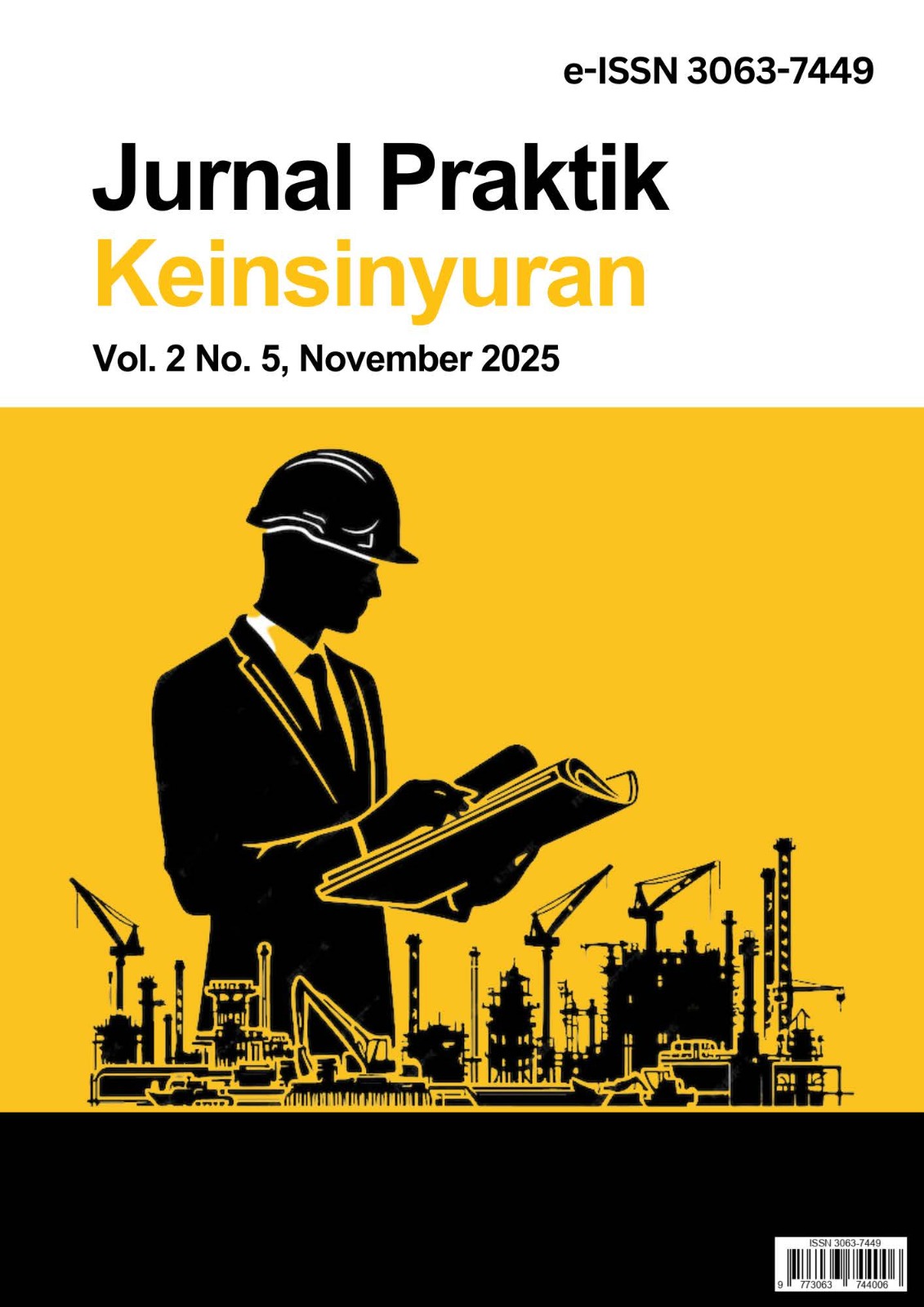Optimalisasi Konsumsi Energi Kompresor Melalui Otomatisasi Valve Pneumatik Pada Lini Pengeringan Galon 19L
DOI:
https://doi.org/10.25170/jpk.v2i05.6919Keywords:
energy efficiency, pneumatic system, compressor optimization, industrial automation, AMDKAbstract
This engineering practice project is designed to improve energy efficiency by modernizing the drying process in the 19-liter gallon packaging line within a Bottled Drinking Water (AMDK) facility. Traditionally, the drying system operated by continuously releasing compressed air at high pressure, regardless of whether a product was present, leading to substantial energy waste. To mitigate this inefficiency, a low-cost automation system was deployed, integrating inductive proximity sensors with pneumatic solenoid valves. These components enable airflow to be activated only when a gallon is detected at the drying station, thereby eliminating unnecessary energy discharge. Quantitative evaluations reveal that this system effectively reduces compressor operating hours and lowers daily energy consumption. The monthly cost savings amount to IDR 3,070,553, equivalent to annual savings of approximately IDR 36,846,640. The system requires minimal capital investment, with a calculated payback period of less than 24 hours. In addition to its financial benefits, the solution promotes operational reliability, reduces compressor wear, and aligns with sustainable industrial practices. Its simplicity and affordability make it highly replicable for similar pneumatic systems across various manufacturing settings.
References
Choi, Y. & Kim, H. (2021). Low-cost automation strategy for small-scale industrial energy systems. Journal of Industrial Automation, 17(3), 142–150.
Compressed Air Best Practices. (2022). Optimizing compressed air systems for energy efficiency. [online] Tersedia di: https://www.airbestpractices.com [Diakses 15 Jul. 2025].
Hermawan, T. & Supriyanto, A. (2021). Studi efisiensi pemakaian udara terkompresi pada sistem pengemasan. Jurnal Teknologi dan Rekayasa, 19(2), 95–102.
International Energy Agency (IEA). (2020). Energy Efficiency 2020: Analysis and outlooks to 2040. Paris: IEA Publications.
Lee, J. & Bae, S. (2019). Sustainable engineering in bottled water industry: Energy perspectives. Applied Environmental Research, 41(4), 45–53.
Nasution, A. & Harahap, D. (2022). Evaluasi sistem kendali pneumatik berbasis relay untuk efisiensi energi. Jurnal Teknik Mesin dan Industri, 8(1), 23–31.
Park, K. & Woo, Y. (2024). Deployment of sensor-actuated pneumatic control systems in energy-intensive sectors. International Journal of Green Manufacturing, 5(2), 77–84.
Rachman, D. & Kusumawati, N. (2021). Evaluasi sistem pengering berbasis sensor pada lini produksi kemasan. Jurnal Teknologi dan Energi, 14(2), 101–108.
Rani, S. & Hidayat, A. (2024). Efektivitas sensor proximity dalam sistem pengering galon industri. Jurnal Otomasi dan Sistem Kontrol, 12(1), 15–22.
Singh, V. & Patel, K. (2020). Compressed air energy losses in industrial facilities: Diagnosis and prevention. Energy Management Journal, 11(3), 59–68.
Susanto, R. (2021). Implementasi sistem kontrol low-cost automation pada sektor manufaktur. Jurnal Rekayasa Energi, 13(2), 67–74.
Widodo, S. (2018). Efisiensi energi pada sistem pneumatik industri: Studi kasus kompresor. Jurnal Rekayasa Sistem Industri, 9(3), 230–237.
Wang, L. & Zhao, M. (2020). Industrial compressed air systems: Energy analysis and optimization techniques. Energy Reports, 6, 1849–1860.
Yanto, H. & Vannie, L. (2019). Penghematan energi melalui penerapan sistem PLC pada pengendalian kompresor industri. Jurnal Inovasi Teknik Industri, 7(2), 112–118.
Zhang, X., Li, Q. & Chen, J. (2023). Compressed air inefficiencies and system redesign in high-volume manufacturing. Journal of Cleaner Production, 421, 139842.




